Name Augustus Tolton Birth name Augustus Tolton | Ordination April 24, 1886 Title as Saint Servant of God | |
 | ||
Parents Martha Jane Chisley, Peter Paul Tolton | ||
Venerated in Roman Catholic Church | ||
Father augustus tolton new biography in barnes noble stores
Servant of God Augustus Tolton (April 1, 1854 – July 9, 1897), baptized Augustine Tolton, was the first Roman Catholic priest in the United States publicly known to be black when he was ordained in 1886. (James Augustine Healy, ordained in 1854, and Patrick Francis Healy, ordained in 1864, were of mixed-race.) A former slave who was baptized and reared Catholic, Tolton studied formally in Rome.
Contents
- Father augustus tolton new biography in barnes noble stores
- Servant of god augustus tolton playlist
- Early life
- Freedom
- Vocation
- Priesthood
- Death
- Legacy and honors
- Cause for canonization
- References
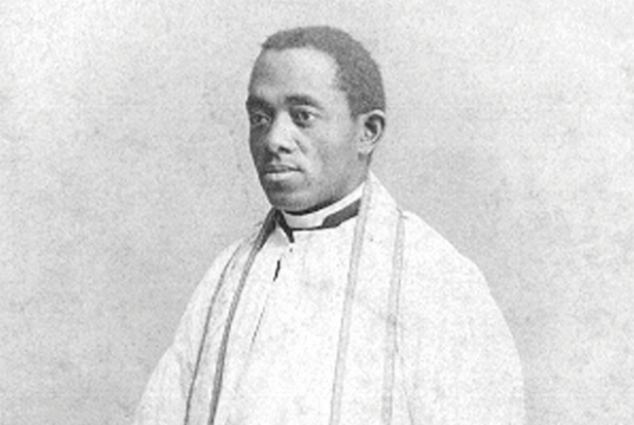
He was ordained in Rome on Easter Sunday of 1886 at the Archbasilica of St. John Lateran. Assigned to the diocese of Alton (now the Diocese of Springfield), Tolton first ministered to his home parish in Quincy, Illinois. Later assigned to Chicago, Tolton led the development and construction of St. Monica's Catholic Church as a black "national parish church", completed in 1893 at 36th and Dearborn Streets on Chicago's South Side.
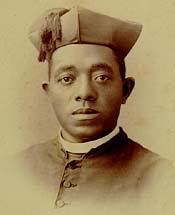
Servant of god augustus tolton playlist
Early life
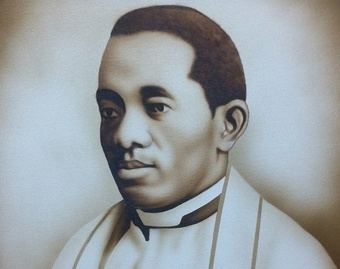
Augustus Tolton was born in Missouri to Peter Paul Tolton and his wife Martha Jane Chisley, who were enslaved. His mother, who was reared Catholic, named him after an uncle named Augustus and was baptized Augustine in St. Peter's Catholic Church in Brush Creek, Missouri, a community about 12 miles from Hannibal. His master was Stephen Elliott. Savilla Elliot, his master's wife, stood as Tolton's godmother.
Freedom
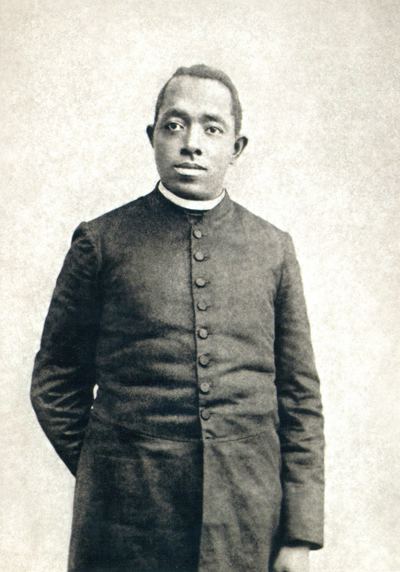
How the members of the Tolton family gained their freedom remains a subject of debate. According to accounts Father Tolton told friends and parishioners, his father escaped first and joined the Union Army. Tolton's mother then ran away with her children Charley, Augustine, and Anne. With the assistance of sympathetic Union soldiers and police, she crossed the Mississippi River and into the Free State of Illinois. According to descendants of the Elliott family, though, Stephen Elliott freed all his slaves at the outbreak of the American Civil War and allowed them to move North. Augustine's father died of dysentery before the war ended.
Vocation
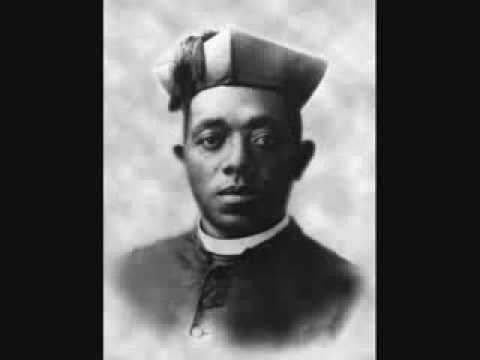
After arriving in Quincy, Illinois, Martha, Augustus, and Charley began working at the Herris Tobacco Company where they made cigars. After Charley's death at a young age, Augustine met Father Peter McGirr, an Irish Immigrant priest, from Fintona, County Tyrone who gave him the opportunity to attend St. Peter's parochial school during the winter months when the factory was closed. The priest's decision was controversial in the parish. Although abolitionists were active in the town, many of Father McGirr's parishioners objected to a black student at their children's school. McGirr held fast and allowed Tolton to study there. Later Tolton continued studies directly with some priests.
Despite McGirr's support, Tolton was rejected by every American seminary to which he applied. Impressed by his personal qualities, McGirr continued to help him and enabled Tolton's study in Rome. Tolton graduated from St. Francis Solanus College (now Quincy University) and attended the Pontifical Urbaniana University, where he became fluent in Italian as well as studying Latin and Greek.
Priesthood
Tolton was ordained to the priesthood in Rome in 1886 at age 31. Expecting to serve in an African mission, he had been studying its regional cultures and languages. Instead, he was directed to return to the United States to serve the black community.
Tolton celebrated his first public Mass at St. Boniface church in Quincy. He attempted to organize a parish there, but over the years met with resistance from both white Catholics (many of whom were ethnic German) and Protestant blacks, who did not want him trying to attract people to another denomination. He organized St. Joseph Catholic Church and school in Quincy, but ran into opposition from the new dean of the parish, who wanted him to turn away white worshipers from his services.
After reassignment to Chicago, Tolton led a mission society, St. Augustine's, that met in the basement of St. Mary's Church. He led the development and administration of the Negro "national parish" of St. Monica's Catholic Church, built at 36th and Dearborn Streets on the South Side, Chicago. The church sanctuary seated 850 parishioners and was built with money from philanthropist Mrs. Anne O'Neill and Saint Katherine Drexel.
St. Monica's Parish grew to have 600 parishioners from a base of 30 prior to the construction of the new church building. Tolton's success at ministering to black Catholics quickly earned him national attention within the Catholic hierarchy. "Good Father Gus", as he was called by many, was known for his "eloquent sermons, his beautiful singing voice and his talent for playing the accordion."
Several contemporaneous news articles describe his personal qualities and importance. An 1893 article in the Lewiston Daily Sun, written while he worked to establish St. Monica's for African American Catholics in Chicago, said, "Father Tolton...is a fluent and graceful talker and has a singing voice of exceptional sweetness, which shows to good advantage in the chants of the high mass. It is no unusual thing for many white people to be seen among his congregation." The True Witness and Catholic Chronicle in 1894 described him as "indefatigable" in his efforts to establish the new parish. Daniel Rudd, who organized the initial National Black Catholic Conference which was held in 1889, was quoted in the November 8, 1888 edition of The Irish Canadian as commenting about the Congress by saying, "For a long time the idea prevailed that the negro was not wanted beyond the altar rail, and for that reason, no doubt, hundreds of young colored men who would otherwise be officiating at the altar rail to-day have entered other walks. Now that this mistaken idea has been dispelled by the advent of one full-blooded negro priest, the Rev. Augustus Tolton, many more have entered the seminaries in this country and Europe...". In another indication of the prominence given Father Tolton by parts of the American Catholic hierarchy was his participation, a few months later, on the altar at an international celebration of the centenary of the establishment of the first U. S. Catholic Diocese in Baltimore. Writing about it in the New York Times edition of November 11, 1889, the correspondent noted (with apparent astonishment), "As Cardinal Gibbons retired to his dais [on the altar at the Mass], the reporters in the improvised press gallery noticed for the first time, not six feet away from him in the sanctuary among the abbots and other special dignitaries, the black face of Father Tolton of Chicago, the first colored Catholic priest ordained in America."
Death
Hemesath writes that Tolton began to be plagued by "spells of illness" in 1893. Because of them, he was forced to take a temporary leave of absence from his duties at St. Monica's Parish in 1895.
At the age of 43, on July 8, 1897, he collapsed and died the following day at Mercy Hospital as a result of a heat wave in Chicago in 1897. After a funeral which included 100 priests, Tolton was buried in Quincy in the priests' lot in St. Peter's Cemetery, which had been his expressed wish.
After Tolton's death, St. Monica's was made a mission of St. Elizabeth's Church. In 1924 it was closed as a national parish, as black Catholics chose to attend parish churches in their own neighborhoods.
Legacy and honors
Cause for canonization
On March 2, 2010, Cardinal George of Chicago announced that he was beginning an official investigation into Tolton's life and virtues with a view to opening the cause for his canonization. This cause for sainthood is also being advanced by the Diocese of Springfield, Illinois, where Tolton first served as priest, as well as the Diocese of Jefferson City, Missouri, where his family was enslaved.
On February 24, 2011, the Roman Catholic Church officially began the formal introduction of the cause for sainthood of Fr. Augustus Tolton, which must take place in a public session. He is now designated Servant of God Fr. Augustus Tolton. Also at this time there was the establishment of historical and theological commissions, which will investigate the life of Fr. Tolton, and the Father Tolton Guild, which is responsible for the promotion of his cause through spiritual and financial endeavors. Cardinal George assigned Joseph Perry, Auxiliary Bishop of Chicago, to be the Diocesan Postulator for the cause of Fr. Tolton's canonization.
On September 29, 2014, at Saint James Chapel at the Archbishop Quigley Center in Chicago, Illinois, Cardinal George formally closed the investigation into the life and virtues of Father Augustus Tolton. The dossier of research into Tolton's life went to the Vatican, where the documents collected which support his cause will be analyzed, bound into a book called a "positio," or official position paper, and evaluated by theologians, and then, supporters hope, passed on to the pope, who can declare Tolton "venerable" if he determines Tolton led a life of heroic virtue.
On December 10, 2016, Fr. Tolton's remains were exhumed and verified as part of the canonization process. Following procedures laid out in canon law, a forensic pathologist verified that the remains (which included a skull, femurs, ribs, vertebrae, pelvis, and portions of arm bones) belong to Fr. Tolton. Also found were the corpus from a crucifix, part of a Roman collar, the corpus from Fr. Tolton's rosary, and glass shards indicating his coffin had a glass top. After verification the remains were dressed in a new chasuble and reburied.
